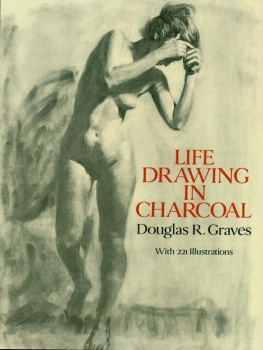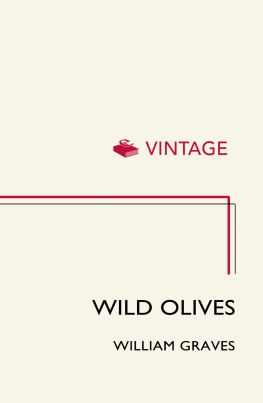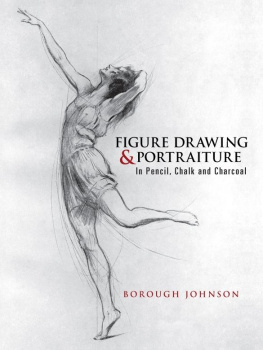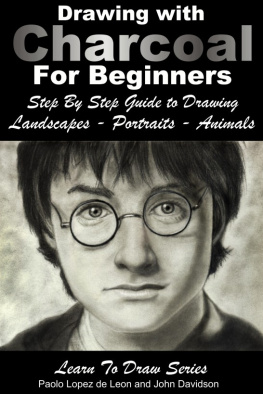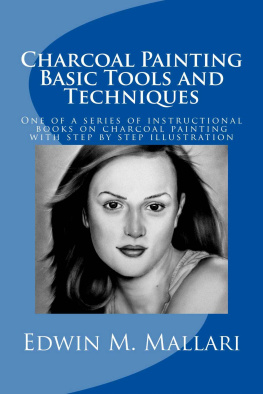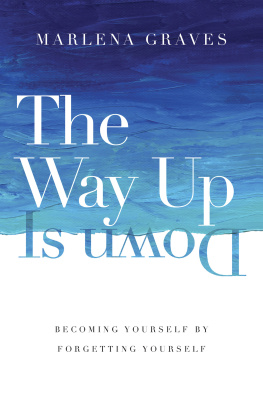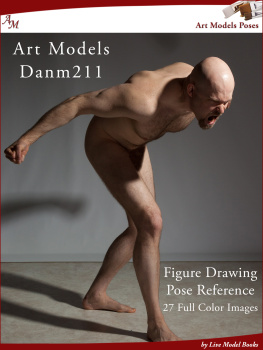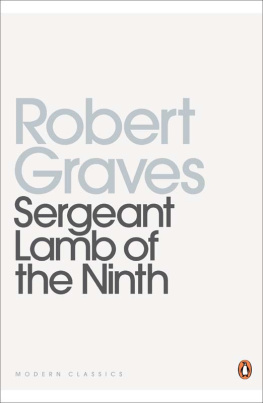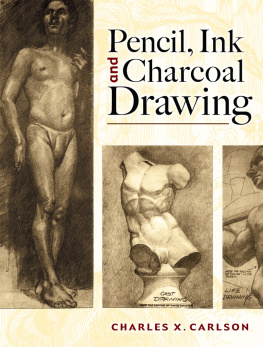Douglas R. Graves - Life Drawing in Charcoal
Here you can read online Douglas R. Graves - Life Drawing in Charcoal full text of the book (entire story) in english for free. Download pdf and epub, get meaning, cover and reviews about this ebook. year: 2012, publisher: Dover Publications, genre: Home and family. Description of the work, (preface) as well as reviews are available. Best literature library LitArk.com created for fans of good reading and offers a wide selection of genres:
Romance novel
Science fiction
Adventure
Detective
Science
History
Home and family
Prose
Art
Politics
Computer
Non-fiction
Religion
Business
Children
Humor
Choose a favorite category and find really read worthwhile books. Enjoy immersion in the world of imagination, feel the emotions of the characters or learn something new for yourself, make an fascinating discovery.
- Book:Life Drawing in Charcoal
- Author:
- Publisher:Dover Publications
- Genre:
- Year:2012
- Rating:4 / 5
- Favourites:Add to favourites
- Your mark:
- 80
- 1
- 2
- 3
- 4
- 5
Life Drawing in Charcoal: summary, description and annotation
We offer to read an annotation, description, summary or preface (depends on what the author of the book "Life Drawing in Charcoal" wrote himself). If you haven't found the necessary information about the book — write in the comments, we will try to find it.
Life Drawing in Charcoal — read online for free the complete book (whole text) full work
Below is the text of the book, divided by pages. System saving the place of the last page read, allows you to conveniently read the book "Life Drawing in Charcoal" online for free, without having to search again every time where you left off. Put a bookmark, and you can go to the page where you finished reading at any time.
Font size:
Interval:
Bookmark:
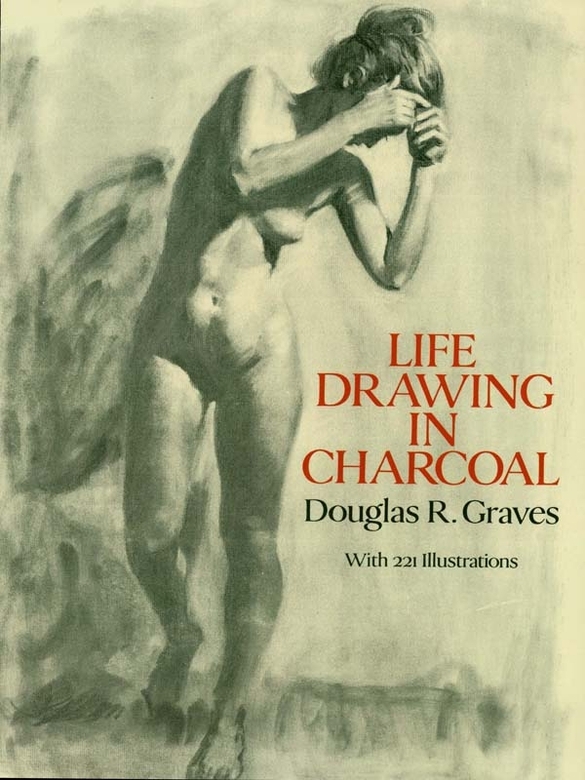
My gratitude goes to John Grafton, Hayward Cirker, Bonnie Iris, and my wife Bea, who all believed there was more life in the book.
Although this book must end, a conclusion is never reached in art. The labor of the artist goes on and on. The shimmering goal of that one perfect drawing is always dangling before you. Youll never give up the quest for it, nor should you, despite self-doubt, pessimism in others, or bad times. At best, the path throughout an art career is a convoluted one. There is no right path to take. Your own emotional involvement provides both the path and the obstacle in it. In addition to surmounting some mechanical problems, art instruction should give you aid in overcoming these psychological and emotional barriers.
Throughout this book Ive hoped to speed you down your own path by increasing your powers of observation. By learning to see objects especially the human form in their totality, as large masses of tone, you can gain a freedom from concern for detail often fostered in the person who begins drawing in line. Charcoal is the perfect medium for this type of broad and free exploration. The human body is the ideal subject on which to practice this tonal approach. Natures most subtle tonal values, shapes, and shadows are all there in the human figure.
Ultimately youll want to paint. This desire has also motivated much of the direct instruction in this book and in my classroom. Im strongly convinced of the natural carryover of mass or tonal drawing to painting. Youll find that you can apply to painting the exact lessons on tone and values that Ive given you here. Developing some facility for handling tonal values will help you with the next problems of color and composition. Then, youll be well on your way to painting and further down your path.
The materials needed for working in charcoal (Figure A) are few and not too expensive. Usually they can be found in any art supply store. On the chance that youve never used the medium of charcoal, Ill describe briefly the items that should be in your kit, and Ill say something about their use. The list of what youll need is the same kit that Ive used in my drawings. It includes the following:
Charcoal sticks (vine)
Compressed charcoal
Powdered charcoal
Charcoal or carbon pencils
Kneaded eraser
Chamois
Pink pearl eraser
Stump
Bristle brush
Foam rubber powder puff
Sander
Paper
Fixative
The charcoal sticks that I recommend for beginners are usually called vine charcoal. Theyre made from straight, fine grained woods like willow, beech, and bass. Sizes vary in thickness from 1/4 to 1/2. Grades are soft, medium, and hard. In an old book, The Craftsmans Handbook by Cennino DAndrea Cennini, the author tells how you may make your own coals, as he calls charcoal. Bundle together nice, dry sticks of willow, about the length of your palm. Tie the bundles in three places, the middle and each end, with a fine copper wire. Take a brand new casserole and fill it with these bundles. Then get a lid for it (luting it with clay so nothing will evaporate). Then, go to the bakers in the evening, after he has quit work, and put this casserole in one of his ovens and let it stay there until morning! Your baker would probably throw you out if you tried such a thing, so Id suggest you buy the ready-made charcoal.
A new brand on the market is made by F. Weber Co. called American Rouget willow. It comes in square sticks. I find that it works very well, behaving like the beautiful French charcoal we used to be able to get.
Compressed charcoal (Siberian charcoal) is potent stuff, too powerful for beginners. Since the value of charcoal is its easy removal with erasers and chamois, the tenacious adhesion of compressed charcoal is undesirable; it doesnt lend itself to the plastic method of drawing that Im going to demonstrate at first. When youre more sure of yourself, then compressed charcoal will be useful. Its virtues, on the other hand, are its rich black color, smoother texture, and more permanent quality. Compressed charcoal is made by grinding charcoal and compressing it with binders such as clay, chalk, soap, tapioca, or other ingredients.
In the early phases of charcoal drawing, Ill advise you to cover your paper with a middle tone. You can do this by using a stick of soft charcoal; but as you zigzag over the page, youll quickly use up the stick. An expedient way of covering your paper is with powdered charcoal sold in paper cans. A can of it will last a long time, because a little bit goes a long way. Lay your paper flat and sprinkle the powder on lightly. Brushing it out with the powder puff will give you a nice middle tone. The powder can also be used to render a complete drawing. By dipping a bristle brush into the powder, you can apply it directly to the drawing and brush it on as a tone. Experiment with it, but be careful or youll wind up looking like a coal miner. (Caution: near an open flame or spark, powdered charcoal can be explosive.)
Charcoal and carbon pencils are about in the same class as compressed charcoal, except that theyre made in the form of a pencil with a wooden sheath and smaller in diameter. They have the same advantages and disadvantages as the sticks of compressed charcoal. Further hindrances are the need to sharpen them constantly, and more importantly, the fact that they wont cover large areas quickly. The small point wont make broad, sweeping passages. But later these smaller drawing tools can be used to accentuate small, pinpoint spots where a large stick of charcoal would be clumsy.
The next items might really be listed under charcoal, because Id like you to think of them as tone makers for the lighter tones.
In charcoal drawing, the kneaded eraser and the chamois are the best tools for making lighter grays and whites on toned paper. (Oddly enough, the kneaded eraser is a modern version of soft, fresh bread, which was used once upon a time to clean off charcoal.) Youll get into the habit of kneading the eraser in your hand as you work to keep its clean surface on the outside. You can shape it to render anything: a wide sweep or a pinpoint highlight.
The chamois will make larger expanses of light tones. By wrapping it around your finger, you can remove more at once than you can with the eraser.
If the kneaded eraser doesnt remove enough charcoal, use the pink pearl eraser, which is firm rubber.
The blenders are the stump, brush, and puff. Im not opposed to using a stump, which is merely a tightly rolled paper formed into a pointed tool. Ive seen some nice drawings done by using this tool throughout the whole process. However, I dont use a stump because it seems to destroy the patina of the paper. The tones go lifeless and lose that sparkle which the tiny valleys skipped by the charcoal, but filled by the stump give the drawing. The same holds true for the bristle brush. Its a favorite tool for many, and the advantage is the long handle that enables you to use it like a painter (with arm movement) and to keep a little more distance from your work.
For myself the perfect blender is my finger; but Im lucky because my fingers are dry. If youve a tendency to perspire or have oily skin, dont touch the drawing with your fingers! The next best thing is the foam rubber puff. Its soft texture is perfect for blending tones. The puff makes the tones lighter about a half step at first but as you add more charcoal less will come off. Hold the puff tilted up so that just the edge glides, light as a feather, over the zone to be blended. If you want to get into a very tiny spot, double it over so that you have just a point. These puffs are available at cosmetic counters.
Font size:
Interval:
Bookmark:
Similar books «Life Drawing in Charcoal»
Look at similar books to Life Drawing in Charcoal. We have selected literature similar in name and meaning in the hope of providing readers with more options to find new, interesting, not yet read works.
Discussion, reviews of the book Life Drawing in Charcoal and just readers' own opinions. Leave your comments, write what you think about the work, its meaning or the main characters. Specify what exactly you liked and what you didn't like, and why you think so.

